#journal//022
Explore tagged Tumblr posts
Text
Sex Differences in Physical Strength
A while ago, I explained the substantial issues with IOC study on Transgender Athletes, and explained how the physical advantages for men in sports also apply to transwomen. However, I wanted to make an additional post highlighting the evidence base for sex differences in physical performance. These differences underlie arguments for important issues like sex-segregated sports and self-defense laws.
This 2023 review [1] of several hundred studies found:
Female grip strength (a proxy for overall strength) is around 75% of male grip strength, starting around age 15
Men are stronger in all muscle groups, but this difference is more pronounced in upper body strength tests
When comparing male and female power-lifters with the sex-relative body masses, female power-lifters strength was between 46-64% that of males
There is no evidence that a neurological factor (i.e., voluntary activation) underlies this difference
Instead differences in "muscle mass, size, and fiber type" are most likely responsible
Despite lesser strength, women demonstrated greater muscle endurance than men
This 2024 review [2], again, of several hundred studies, discusses the physiological differences that may underlie this, including sex hormones (e.g., testosterone, estrogen), body composition, organ size, among others. This review confirms and extends the research in [1].
This 2022 review [3] describes the sex differences underlying differences in endurance sports. Importantly, males and females each have some advantageous traits, but when examined holistically men's physiology confers them a performance advantage. This 2022 review [4] discusses the impacts of sex differences in oxygen utilization.
This 2023 review [5] further discusses the biological factors that underlie these differences, extending the discussion to the molecular level.
Together these reviews illustrate undeniable sex differences in physiology. Please see the initial link for an examination of how these differences apply to all biologically male individuals.
Importantly, however, these differences are rarely relevant in day-to-day life (i.e., for almost all jobs, for non-physical activities, etc.). These differences are primarily relevant when considering "competitions" between individuals whether they are recreational (e.g., sports) or antisocial (e.g., physical fights, abuse, etc.).
References under the cut:
Nuzzo, J. L. (2023). Narrative review of sex differences in muscle strength, endurance, activation, size, fiber type, and strength training participation rates, preferences, motivations, injuries, and neuromuscular adaptations. The Journal of Strength & Conditioning Research, 37(2), 494-536.
Hunter, S. K., & Senefeld, J. W. (2024). Sex differences in human performance. The Journal of Physiology, 602(17), 4129-4156.
Besson, T., Macchi, R., Rossi, J. et al. Sex Differences in Endurance Running. Sports Med 52, 1235–1257 (2022). https://doi.org/10.1007/s40279-022-01651-w
Santisteban, K. J., Lovering, A. T., Halliwill, J. R., & Minson, C. T. (2022). Sex differences in VO2max and the impact on endurance-exercise performance. International journal of environmental research and public health, 19(9), 4946.
Landen, S., Hiam, D., Voisin, S., Jacques, M., Lamon, S., & Eynon, N. (2023). Physiological and molecular sex differences in human skeletal muscle in response to exercise training. The Journal of physiology, 601(3), 419-434.
39 notes
·
View notes
Text
✧.* grow as we go; svt smau.
entry #23 signing off for now.
synopsis: over the past ten years you’ve fallen in love many times. one day someone happens to stumble across your journal sitting out on your nightstand and started posting your entries online. after all of your secrets are leaked it’s clear things would ever be the same again.
𐦍 paring: svt members x afab! reader.
𐦍 feat: non-idol! svt
𐦍 genre/s: reader is super angsty low-key, fluffy, sexual themes.
𐦍 content: swearing, bullying, crazy ex’s, mentions of sexual relations, some drinking& mary jane 🍃
masterlist ▸ 022 end it all. ▸ 024 epilogue.






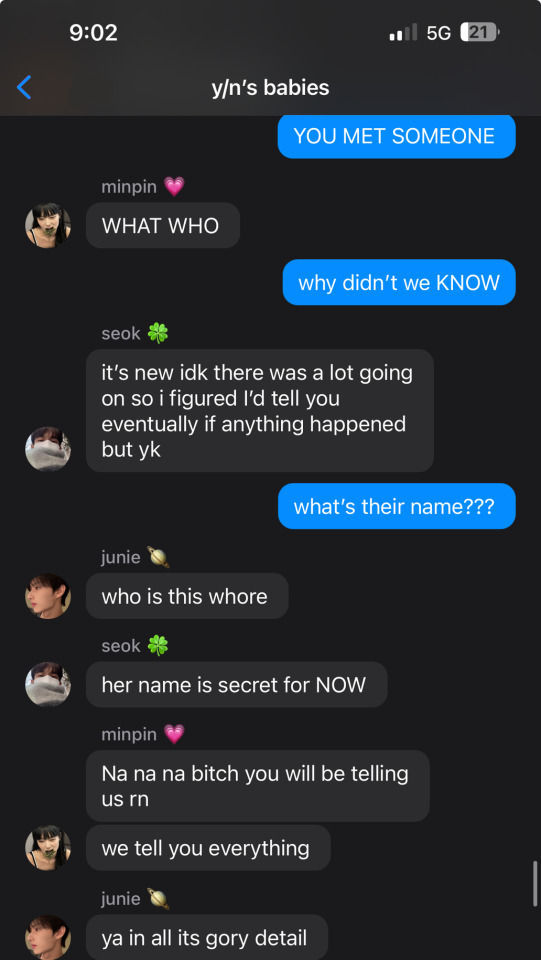












note: one more teeny tiny Chappy left ( until next time..oop) thank you all sm for the love on this smau its my first (hopefully of many) and its been so fun exploring w/ u its so hard to let it go. if you want you can check out my new smau starting next week here!! <3 let me know ur theories on our anon. hehe. xo.

taglist:@sun-daddy-yoriichi@hipsdofangirl@kissesfrmwonwoo@minhui896@wonwooz1@porridgesblog@jasssy051@soonyoungblr@saucegirlreads@musingsofananxiouspotato@young-adult-summer@punkhazardlaw@bibs-world@the-swageyama-tobiyolo@wonuulvr@woozixo@k-drama-adict@90s-belladonna@blaycke@dnylwoo@to-mi-yo, @nonononranghaee@bee-the-loser@mxnhoeuwu @ra1n7b33
#❃ - duffytalks#seventeen fluff#seventeen scenarios#seventeen headcanons#seventeen x reader#svt reactions#seventeen imagines#svt fic#svt texts#seventeen x oc#seventeen x you#seventeen x y/n#svt x oc#svt x reader#svt x you#svt x y/n#seventeen au#seventeen smut#svt social media au#svt smut#svt scenarios#svt smau#seventeen fic#seventeen sns#seventeen series#seventeen soft hours#seventeen soulmate au#seventeen text au#seventeen texts#seventeen thoughts
56 notes
·
View notes
Text
following my previous post, i wanna touch a bit more on the subject of why clancy seems to be diverging from torchbearer's original plan and how he's trying to find a compromise to fit the reality he's found himself in: how his worst enemy is, in fact, an inseparable part of himself.
it all comes down to these two main points:
1. balance

2. jurisdiction
— Interview with Zane Lowe, 2018
tyler talks about blurryface inhabiting certain parts of his brain, places where this entity seems to have taken over, and the only way for him to escape from this encompassing darkness is running away from those occupied spaces and finding new, unexplored ground. that's what trench is; like tyler said, a liminal space, "where we used to bleed and where our blood needs to be", the space between your starting point and where your finish line must be.
we all know you're not supposed to stay in dema, but you're also not supposed to settle down in trench, as it serves as a place to find your footing, find your support system, and gather tools for your survival. a state of transition.
along the way this mindset has evolved, adapted, shifted. we are no longer running away, but rather, running towards. as i said in my previous post, clancy has found a shaky sort of confidence. it's not fully there at first, but he is secure enough in his own abilities to stop running away and face his tormentors dead on. we know by now this feeling of control starts to cloud his judgement.
however, with this newfound overconfidence, comes perhaps unwanted clarity:
Why was this given to me? Why am I the only one that can wield it? Was this the reason that I survived? My mind is racing as I wait here on the rocks - staring off into the darkness. Waiting for our torches to be mirrored - the signal he told me to wait for.
It feels oddly familiar. Not the spikes in my hand, but the power it harnesses, I've felt it before. Is this also the source of those rumors I heard in the dark corners of the city? Legends and stories that I assumed were myth, inspired by children's nightmares - tales of what the bishops would use the bodies for. Those "honorable" citizens who achieved The Glorious Gone - referred to as available vessels.
It all begins to make sense.
The episodes I would have: the blood red vision, my dreams of flying, the out of body account of the rider in the river, the decaying hosts of the television show, the robed figures that commanded the doomed ship...
Had we all been "seized" by the bishops using this same technique? Is this where their power comes from? Are they immortal, or just feeding off the next body, giving their hosts a brief second-life? I am in my original life, why am I available to this control?
This whole time I thought I was battling my inner self. Was I actually under assault from something else? SomeONE else?
— Clancy's journal, 022 03MOON 18
blurryface, nico, the bishops, dema and all it represents... they're all an inseparable part of clancy's psyche. one cannot exist without the other:

— 'Inside the revolutionary success of twenty one pilots’ Blurryface', Kerrang! Magazine #1593, 2015
your pain, your anger, your insecurities, your fears, everything comes from the same place: yourself. there might be external influences, of course. situations differ and everyone's psyche is different, but ultimately, the only way to defeat these obstacles is learning to balance them, to mold and tame them, in order to break the seemingly never-ending cycle of self destruction in half.

— ALT 98.7 FM, LA Press Conference, 2019
[Tyler] explained the elements of ourselves that we hate, and the constant battle against these traits. In order to add clarity to this internal struggle, he gave a name to these negative attributes: “Blurryface”. This way, we can attempt to define the struggle, and to see the battle we are actually facing.
it's not a problem to solve, it's a tension to manage.
But Blurryface isn’t that black and white. There are more layers to him than described. He can either be represented as sad, angry, evil, or deceptive. He has a tendency to draw you in, but only to pull you down. Tyler mentioned a vision of his mutilated face, and all of the dread associated with the elusive enemy. There is something vague about him, and something that cannot be completely described. No matter what your interpretation of Blurryface is, it’s safe to say that he remains something that we try to hide, and not show to the outside world. [...] The story is black and white, but with red. Red, the color of passion, violence, and anger.
— Brandon Rike, Graphic Designer: Behind Blurryface.
tyler sings to us in migraine: "sometimes to stay alive you gotta to kill your mind." but how does one successfully kill their own mind without also killing an intrinsic part of themselves?
this is where reclaiming comes into play:
reclaiming red
We're excited to get back into it after taking a little bit of a break, but even more excited to get into the color red again, because that was the goal this whole time with the story. The thing we were afraid of, learning how to utilize it and try to win. That's kind of what the story is all about.
— Tyler Joseph, Overcompensate Behind the Scenes

overtaking your former self

reclaiming blue
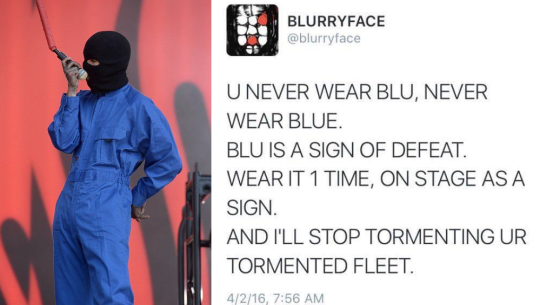

— Clancy's journal, 024 02MOON 28 | Claim #00FFFF, hex code for the shade of blue that is a direct opposite of Blurryface red (#FF0000), and the same color used since Regional At Best. Claim Cyan = anagram of "I am Clancy."
clancy must reclaim these parts in order to break the cycle. he must reach a compromise with himself, coexist with this side, which means making a deal of sorts with blurryface.
blurryface cannot die without clancy meeting his own demise, but blurryface will not stop until clancy is dead. or worse, under its control.
so what is left to do? truce.
a deal, a contract. with torch, with blurry, with himself.
clancy is put in a negotiator role, not only trying to find a perfect balance within himself that will allow the rebellion to win the war, but convincing torch – who will not stop shielding, covering clancy from harm no matter what – that this is the only way to do it: fighting for himself, for once, instead of relying on being saved.
"a balance between being saved by a friend,
and saving yourself"

#twenty one pilots#twenty one pilots lore#clancy#mine: theory#will he be able to regain control and find balance?#or will he fly by the dangerous bend symbol#ignoring danger until it is too late? 🤪🤪#who knows Not me#judging by all the headless imagery uhh not exactly a good sign
9 notes
·
View notes
Text
Also preserved in our archive (Daily updates!)
BY: Carmen Leitch
New studies have provided novel insights into long COVID, which continues to affect millions of people worldwide. The exact rates of the disease are hard to determine because of variations in clinical criteria, and other differences such as differing standards for who is included or excluded from a long COVID diagnosis or study. According to a July 2024 study in The Lancet, the rates of long COVID following an acute infection range from 50 to as much as 85 percent of people who were hospitalized for COVID-19 and unvaccinated; 10 to 35 percent of people who were not hospitalized and not vaccinated, and about ten percent of vaccinated people.
Scientists are still working to determine the causes of long COVID, which may vary or include several factors depending on who is affected and what their health history might be. Some research has found evidence of active infection in people with long COVID. But in that study, half of the long COVID patients did test negative for viral proteins, suggesting that there are multiple causes of the illness.
Symptoms of long COVID include but are not limited to: fatigue, fever, malaise, coughing, chest pain, headaches, sleep problrms, anxiety, diarrhea or constipation, joint pain, and rash. Long term complications may include increased risk of diabetes, blood clots, and heart problems.
A 2022 study reported in Nature Medicine determined that heart dysfunction could be one reason for the symptoms of long COVID, even after a mild infection.
A recent report published in Nature Microbiology has shown that there were abnormally high levels of inflammatory signaling molecules called cytokines in patients with long COVID.
The scientists found that these cytokines could damage heart calls called cardiomyocytes. Since these cells are responsible for the pumping action of the heart, problems with those cells may help explain long COVID symptoms like chest pain and heart palpitations. A heart condition known as POTS (postural orthostatic tachycardia syndrome) has also been associated with long COVID.
Unrelated, recent work reported in the Journal of Autoimmunity and Frontiers in Immunology, has discovered two proteins that could serve as biomarkers for long COVID, and may help explain the mechanisms underlying some cases of the disease. This work showed that people with long COVID carry abnormally high levels of proteins called galectin-9 and artemin in their blood.
These patients also had unusually high levels of certain immune cells known as neutrophils and monocytes, which may cause inflammation. There were also abnormally high levels of killer T cells that were exhausted. Long COVID patients were also deficient in immune cells that can fight infection, called lymphocytes. The researchers noted that neutrophils that are under stress often release galactin-9, which can boost inflammation.
Another recent study from this group, reported in The Lancet Microbe found no evidence of persistent infection in long COVID patients, challenging studies that have found the opposite and highlighting the complexities and sometimes confounding nature of this highly variable disorder.
Studies:
www.thelancet.com/journals/lancet/article/PIIS0140-6736(24)01136-X/fulltext www.clinicalmicrobiologyandinfection.com/article/S1198-743X(24)00432-4/abstract www.nature.com/articles/s41591-022-02000-0 www.nature.com/articles/s41564-024-01838-z pmc.ncbi.nlm.nih.gov/articles/PMC9287587/ www.sciencedirect.com/science/article/pii/S089684112400101X?via%3Dihub www.frontiersin.org/journals/immunology/articles/10.3389/fimmu.2024.1443363/full www.thelancet.com/journals/lanmic/article/PIIS2666-5247(24)00280-5/fulltext
#mask up#covid#pandemic#public health#wear a mask#covid 19#wear a respirator#coronavirus#still coviding#sars cov 2#long covid#covid conscious#covid is airborne
26 notes
·
View notes
Text



022/100. | 05 may 2025.
After breakfast with my partner this morning, I found a public space to work in on campus... not because I'm avoiding students, because I told them where to find me if they needed anything, but because sometimes it helps me avoid distractions to work where people can see me.
At one point, though, I passed through the student bookstore and as some sort of weird stress response, bought a Campus binder and two packs of paper.
✓ graded all remaining journals (210!) ✓ two student meetings (one of which involved a 45-page paper and made me feel incredibly lazy by comparison)
One of my students was accepted to an Ivy League university and thanked me for the letter of recommendation with flowers I am, sadly, certain to kill almost immediately. I cannot keep plants alive for anything.
7 notes
·
View notes
Text
Yu the Great and Sun Wukong's Staff
This is my answer to the following reddit question:
Did the Ruyi Jingu Bang, as a tool used by Da Yu, exist before the novel?
Monkey's golden-hoop iron staff can be traced to the khakkhara and iron rod respectively used by his precursor in the 13th-century JTTW. The story doesn't mention anything about Yu the Great. The demi-god's connection to the staff is, as far as I know, unique to the standard 1592 edition of JTTW.
This association probably came about in a couple of ways. For example, there is a Chinese graphic similarity (and possible totemic connection) between Yu and a specific kind of monkey:
The generic Chinese primate names have identical pronunciations or spellings to those of the earliest Chinese emperors. For instance, the character 猱 (Nao) is considered as the ancestral name of the royal family of Shang dynasty (商朝 ca. 1600–1050 BCE) (Cao, 1997; Wang, 2001). This word is used to denote a primate species that is good at climbing. Similarly, the character 禺 (Yu) represents a long-tailed monkey. This word is the same as the character 禹 (Yu), a legendary emperor well known for his brilliance in regulating floodwater (Huang, 2011). This association between primates and the earliest emperors indicates a possible totemic status for primates (Niu, Ang, Xiao, et al., 2002, p. 91).
(The aforementioned Yu (禺) monkey was apparently well-known, for it is referenced several times in the Classic of Mountains and Seas (Shanhai jing, 山海經, c. 4th-century to 1st-century BCE), a popular Chinese bestiary, in order to indicate the shape and size of certain primate-like animals (Strassberg, 2002, pp. 83, 84, 91, 99, 104, 122, 123).)
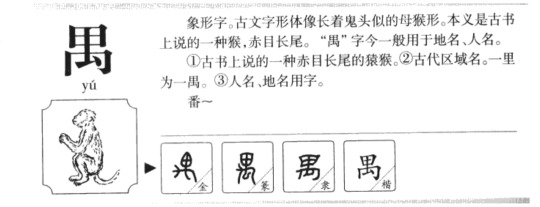
Also, Yu is known for imprisoning Wuzhiqi (無支奇 / 巫支祇), a monkey flood demon, beneath a mountain in Tang and Song-era folklore. This likely influenced Sun Wukong's punishment under Five Elements Mountain.
Therefore, all of this probably led to the author-compiler of the 1592 JTTW associating Monkey's staff with Yu the Great and his efforts to end the world flood.

Sources:
Niu, K., Ang, A., Xiao, Z. et al. (2002). Is Yuan in China’s Three Gorges a Gibbon or a Langur? International Journal of Primatology, 43, 822–866. https://doi.org/10.1007/s10764-022-00302-1
Strassberg, R. (2002). A Chinese Bestiary: Strange Creatures from the Guideways Through Mountains and Seas. University of California Press.
#Da Yu#Yu the Great#Sun Wukong#Monkey King#Journey to the West#JTTW#Wuzhiqi#flood demon#monkey#Shanhaijing#Classic of Mountains and Seas#Magic Staff#Ruyi jingu bang#Gold-banded staff#Lego Monkie Kid#LMK
59 notes
·
View notes
Text


WELCOME TO FLORIOLOGY DAILY
Floriology (n.)
The victorian language of flowers
The purpose of this blog is to journal my journey into learning Floriology, and hopefully teaching you all something along the way.
------------------------------------------------------------------------------
TAGS
#floriology daily - my main tag that will be on all my posts
#Flower of the day - like the name suggests, this is the flower of today, which will include an image, the name, the scientific name, and the meaning of the flower in floriology
#Bontanies - for anything non-floriology related, but still flower or botanical related
#non flowers - for anything that isnt floriology or botanical
#floriology asks - anything that is an answer from my ask box
#flower pairings - for posts about bouquet meanings or flower pair meanings (please send requests!)
#plant identification - I do my best to identify plants in posts
------------------------------------------------------------------------------
ABOUT ME
Hi! I'm Honeii (my main is @honeii-puff), and this is my journey into Floriography and just botany in general. I love plants and all things nature, so this blog is something I'm very happy about
------------------------------------------------------------------------------
SPREADSHEET
This spreadsheet is a list of the flowers that I have (and will) post meanings about. If you put an ask in for me to put a flower in the queue, instead of answering it I will put it into the queue. If you put it as non-anonymous, I will tag you in its posting. If you are anonymous, you will not be tagged.
spreadsheet: https://docs.google.com/spreadsheets/d/1F-bdc2LA62MDV_21P2QZZ1pD103gBUAH0EaVaa_l1GU/edit?usp=sharing
------------------------------------------------------------------------------
FLORIOLOGY MASTERLIST
The links to all the flowers on this blog.
001. - Hydrangea
002. - Dahlia
003. - Crocus
004. - Yarrow
005. - Bellflower
006. - Marigold
007. - Petunias
008. - Bleeding Heart
009. - Lavender
010. - Peoney
011. - Geranium
012. - Foxglove
013. - Daffodil
014. - Snapdragon
015. - Snowdrop
016. - Hosta
017. - Cyclamen
018. - Columbine
019. - Camellia
020. - Lilac
021. - Poppy
022. - Hollyhock
023. - Baby's-Breath
024. - Lupine
025. - Lily
026. - Hyacinth
027. - Belladonna
028. - Aster
029. - Hellebore
030. - Sunflower
031. - Pansy
032. - Daisy
033. - Weeping Begonia
034. - Carnation
035. - Zinnia
036. - Hibiscus
037. - Trumpet Genitian
038. - Amaryllis
039. - Wisteria
12 notes
·
View notes
Text

References
Christens, B. D., Gupta, J., & Speer, P. W. (2021). Community organizing: Studying the development and exercise of grassroots power. Journal of Community Psychology, 49(7), 2694–2710. https://doi.org/10.1002/jcop.22601
Gonzales, T. I. (2017). Two sides of the same coin: The New Communities Program, grassroots organizations, and leadership development in two Chicago neighborhoods. Journal of Urban Affairs, 39(8), 1133–1147. https://doi.org/10.1080/07352166.2017.1310525
Reece, J., Hanlon, B., & Edwards, R. (2022). Philanthropic investment in equity: Cultivating grass roots leaders for the equitable revitalization of marginalized communities. International Journal of Community Well-Being. https://doi.org/10.1007/s42413-022-00165-1
Speer, P. W., Tesdahl, E. A., & Ayers, J. F. (2014). Community organizing practices in a globalizing era: Building power for health equity at the community level. Journal of Health Psychology, 19(1), 101–110. https://doi.org/10.1177/1359105313500255
2 notes
·
View notes
Text
Four in front. Four on back page
Project Garden
Photo Album
001. Profile Picture. Subject
002. Photo of PG Business Card
003. PG Office Door
004. Subject’s Home
005. Park
006. Library
007. Workplace
008. Corner Store
009. Gym
010. College
011. Doctor’s Office
012. Church
013. Bank
014. Bed Room
015. Bathroom
016. Kitchen
017. Sitting Room
018. The Computer
019. The Truck
020. Bookshelf
021. The Street
022. Drive Thru
023. Theater
024. TV
025. Closet
026. Mail Box
027. Refrigerator
028. Grocery Store
029. Book Store
030. Thrift Store
031. Video Camera
032. Personal Phone
033. Participant Ring
034. Letter 1 from PG
035. Project Garden Handbook
036. PG 1st Package: Outside
037. PG 1st Package: Puzzle Box
038. Puzzle Box Opened: Key
039. Key put in a plastic bag
040. Plastic Bag put in drawer
041. Letter 2 from PG
042. Journal
043. Duffle Bag
044. PG 2nd Package: Outside
045. PG 2nd Package: T-Shirt
046. Pic of Sub. in shirt in public
047. Subject meets Field Agent
048. FA gives Sub Present
049. Present: Gas Mask
050. Subject wearing Gas Mask
051. Closet - Full
052. Closet - Half Full
053. Full Open Duffle Bag
054. Closed Duffle Bag
055. Sub. meets with FA again
056. Duffle Bag Switch
057. Closet – Half full with G. Bags
058. Subject meets the Specialist
059. Specialist brings crate to Sub.
060. Crate in Sub. home
061. Sub open crate.
062. Sub put item together. ½
063. Sub goes for a drive
064. Sub gets a Happy Meal
065. HM extra: in black bag
066. Blk Bag: Black Discs
067. Black discs in eyes of G Mask
068. The Crib from the Crate
069. Sissy’s 1st diaper
070. Sissy’s 1st bottle
071. Sissy’s 1st wetting
072. Sissy’s 1st messing
073. Sissy’s 1st changing
074. Sissy’s 1st dress
075. Sissy’s 1st onesie
076. Sissy’s 1st pacifier
077. Sissy’s 1st nap
078. Sissy & Stuffty
079. Sissy’s 1st crying
080. Time out
081. Wash Mouth with Soap
082. Baby Shower
083. Feeding Teasing
084. Bath Time
085. Easter Egg Hunt
086. Horsey Ride
087. Beauty Pageant
088. Potty Training
089. 1st day sissy school
090. Writing on the Chalkboard
091. Snack Time
092. Take Temperature
093. Enema
094. Kiddy Pool
095. Bath Time
096. Car Ride
097. Public Changing
098. Oatmeal in diaper
099. Ice in Diaper
100. Pre Used Diaper
101. Wash Mouth with Soap
102. Nasty Milk
103. Scare the Baby
104. Easter Egg Hunt
105. Carried like a princess
106. Taking Medicine
107. Vinegar Binky
108. Straight Jacket
109. Drunk Baby
110. Baby Sitter & Baby
111. Sleep Over
112. Bare Bottom Spanking
113. Hump Toy
114. Rubs
115. Yellow Snack
116. Skipped Changing
117. Doctor Visit
118. Spreader Pants
119. Weighted Clothing
120. All fours on a Leash
121. Eating out of a dog bowl
122. Full Diaper Spanking
2 notes
·
View notes
Text
The Influence of Social Media and Technologies on Ecuadorian Children Learning English (Research Work Cited)
Angelis, Adeline De. "Professors' English-only or Multilingual Approaches in English
Language Teacher Education at Ecuadorian Universities." Journal of Comparative and International Higher Education, vol. 15, no. 5S, 1 Mar. 2024, pp. 5+. Gale Academic OneFile, dx.doi.org.ezproxy.flcc.edu/10.32674/jcihe.v15i5(S).5861. Accessed 22 June 2025. https://go-gale-com.ezproxy.flcc.edu/ps/i.do?p=AONE&u=finger_main&id=GALE%7CA786742298&v=2.1&it=r
Estrella, Félix. “An Analysis of the Impact of Social Networking Sites on Students’
Performance in English as a Foreign Language: The Case of Ecuadorian Polytechnic Undergraduate Students.” Journal of Educational Technology Systems, vol. 52, no. 1, 2023, pp. 96–116. SAGE Publications, doi:10.1177/00472395231180278. https://journals.sagepub.com/doi/10.1177/00472395231180278
Estrella, Félix. “Ecuadorian University English Teachers’ Reflections on Emergency Remote
Teaching during the COVID‑19 Pandemic.” SN Social Sciences, vol. 2, no. 5, 2022, p. 63, doi:10.1007/s43545-022-00365-0. https://www.sciencedirect.com/science/article/pii/S2666374022000206
Gavilanes Cuesta, Maria Eugenia, and Shalene Silvana Naranjo Andrade. "The impact of
Digital Platforms on English Learning in Ecuadorian Public Primary Schools." Religación. Revista de Ciencias Sociales y Humanidades, vol. 9, no. 41, July-Sept. 2024. Gale Academic OneFile, dx.doi.org.ezproxy.flcc.edu/10.46652/rgn.v9i41.1221. Accessed 22 June 2025. https://go-gale-com.ezproxy.flcc.edu/ps/i.do?p=AONE&u=finger_main&id=GALE%7CA805096535&v=2.1&it=r&cookieConsent=true&analyticsOptout=false&aty=ip
“Use of Technology to Learn English in Ecuadorian Classrooms.” Alfa Publicaciones,
published online June 2024, https://alfapublicaciones.com/index.php/alfapublicaciones/article/view/512/1412.
1 note
·
View note
Note
Please can you debunk the myth that men commit bestiality/ molest/ rape animals significantly more than women, a 2% difference is not “significant” and those all require self reporting. Literally if you google it there will be 98 videos of women and 2 videos of a guy. Statistics is exact science
Yes, I know this is a troll (the "statistics is exact science" really sold it) ... have some (actual) statistics anyway.
According to this 2021 systematic review of "Demographic Characteristics of Individuals Who Abuse Animals" [1], which reviewed 40 studies "non-sexual or sexual animal abusers are more likely male". For specifically sexual abuse of animals, between 80-100% of each sample was male. Notably, this is a similar breakdown as for other violent crimes.
This review [2] of adult perpetrated animal abuse did not divide out non-sexual and sexual abuse, but did find " higher proportions of males perpetrate animal abuse when compared to females".
(And, no, not all of the reviewed studies were self-report.)
Now, to be clear, we don't have a good representative study that will allow for the determination of a prevalence (i.e., "X% of group has abused animals"). All the studies that purport to do this are not representative and have various other issues that prevent their generalizability. That being said, each of these studies did find that more men than women reported (some measure of) bestiality, although the specified percentages varied widely [3*]. Nevertheless, they all consistently support the hypothesis that men are more likely to engage in bestiality.
In addition, while we cannot establish a prevalence rate ("X% of all men/women are animal abusers") we can describe the demographics of identified samples ("Y% of all animal abusers are men/women"). Again, this consistently identifies men as the most common abuser of animals.
---
I don't know what 2% difference you are referring to. (Although for clarity's sake a 2% difference can be significant. You're confusing effect size with significance.) (That being said, the difference is clearly much larger than 2% in this case.)
I will not be googling videos of bestiality. A reminder that possessing and viewing videos/images of sexual abuse of animals is illegal per US federal and most US state laws.
References below the cut:
Emmett, Lisa; Kasacek, Nina; and Stetina, Birgit Ursula (2021) "Demographic Characteristics of Individuals Who Abuse Animals: A Systematic Review," People and Animals: The International Journal of Research and Practice: Vol. 4 : Iss. 1, Article 3.
Alleyne, E., & Parfitt, C. (2017). Adult-Perpetrated Animal Abuse: A Systematic Literature Review. Trauma, Violence, & Abuse, 152483801770878. doi:10.1177/1524838017708785
Zidenberg, A.M., Olver, M.E. Measurement and Correlates of Zoophilic Interest in an Online Community Sample. Arch Sex Behav 51, 4179–4193 (2022). https://doi.org/10.1007/s10508-022-02429-x
*Specifically, see the citations in the "Prevalence of Zoophilia and Bestiality" section.
34 notes
·
View notes
Text
✧.* grow as we go; svt smau.
entry #21 we're so back.
synopsis: over the past ten years you’ve fallen in love many times. one day someone happens to stumble across your journal sitting out on your nightstand and started posting your entries online. after all of your secrets are leaked it’s clear things would ever be the same again.
𐦍 paring: svt members x afab! reader.
𐦍 feat: non-idol! svt
𐦍 genre/s: reader is super angsty low-key, fluffy, sexual themes.
𐦍 content: swearing, bullying, crazy ex’s, mentions of sexual relations, some drinking& mary jane 🍃
masterlist ▸ 020 lost and found. ▸ 022 end it all. (coming soon)

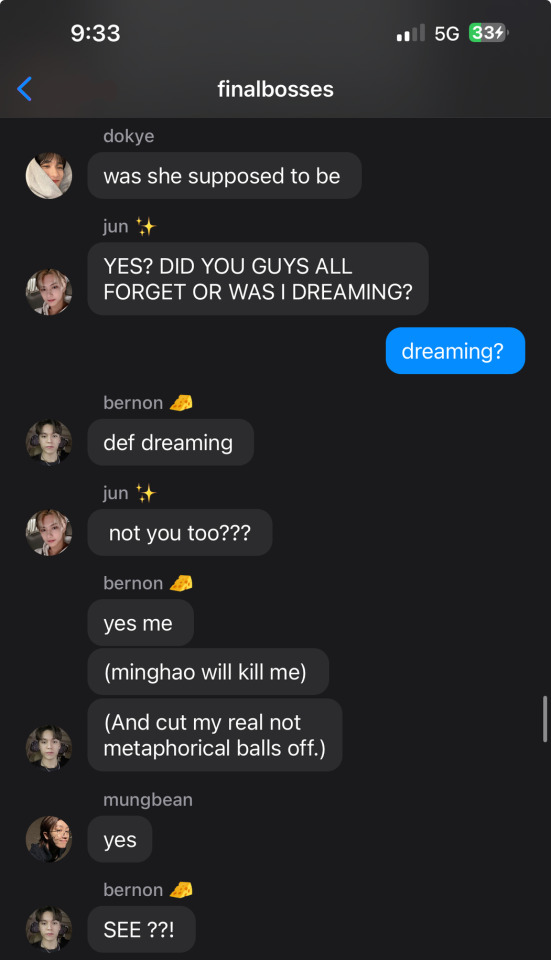


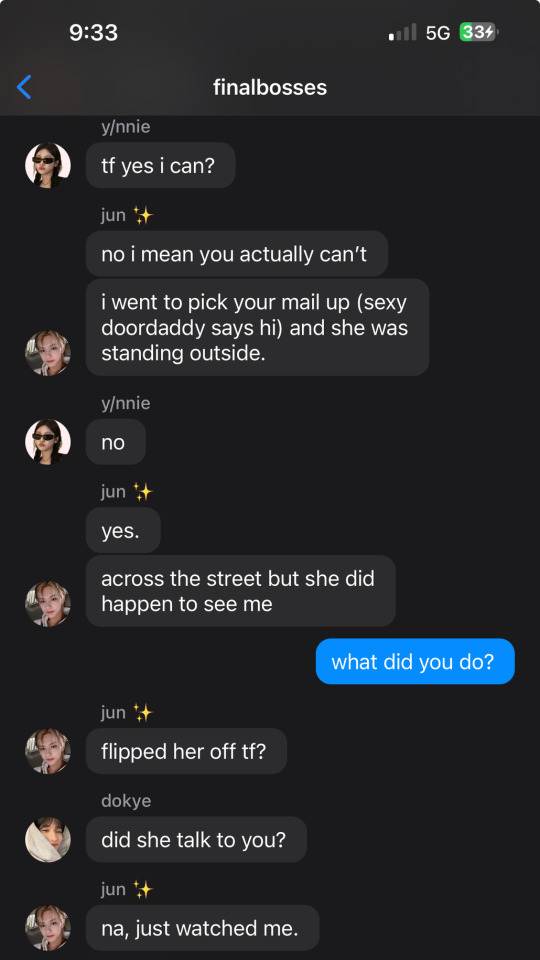



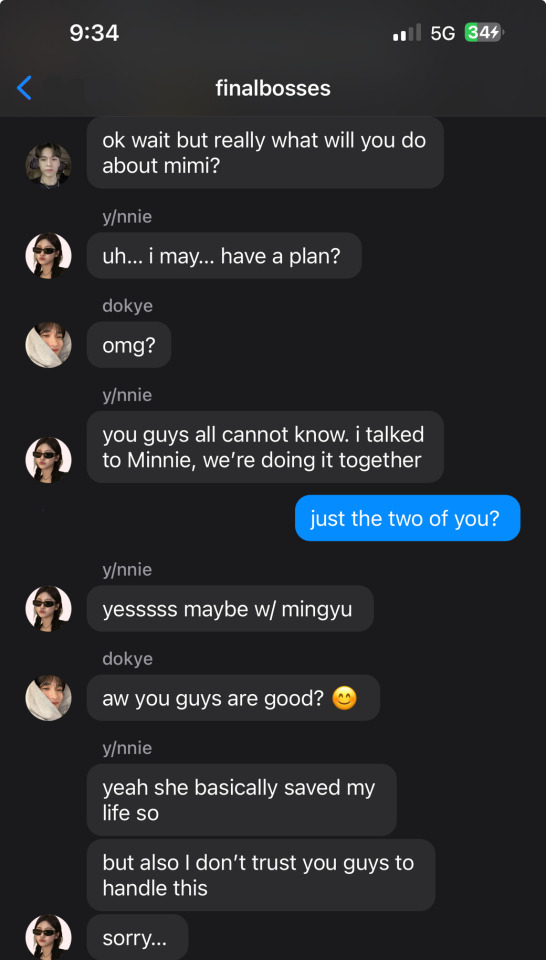
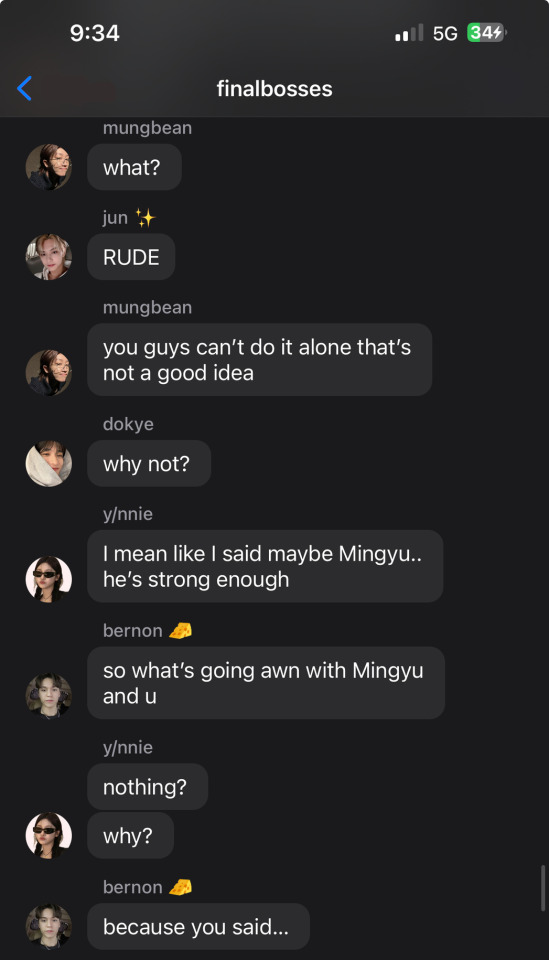


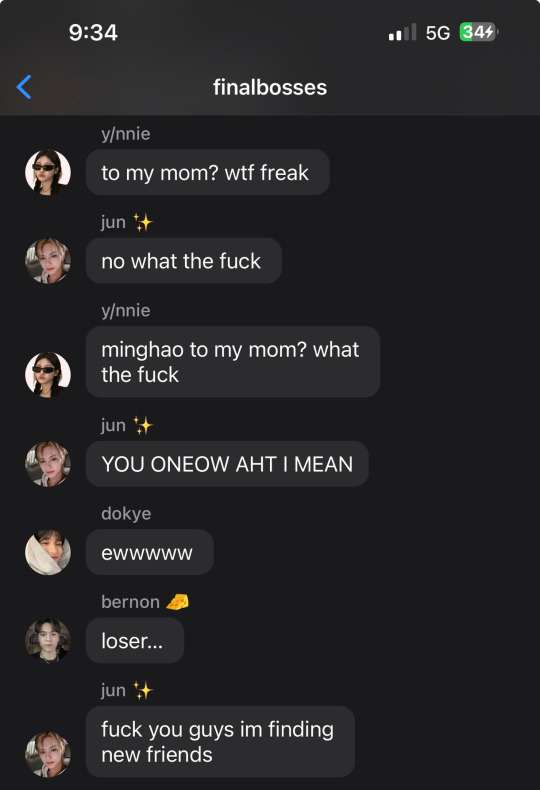




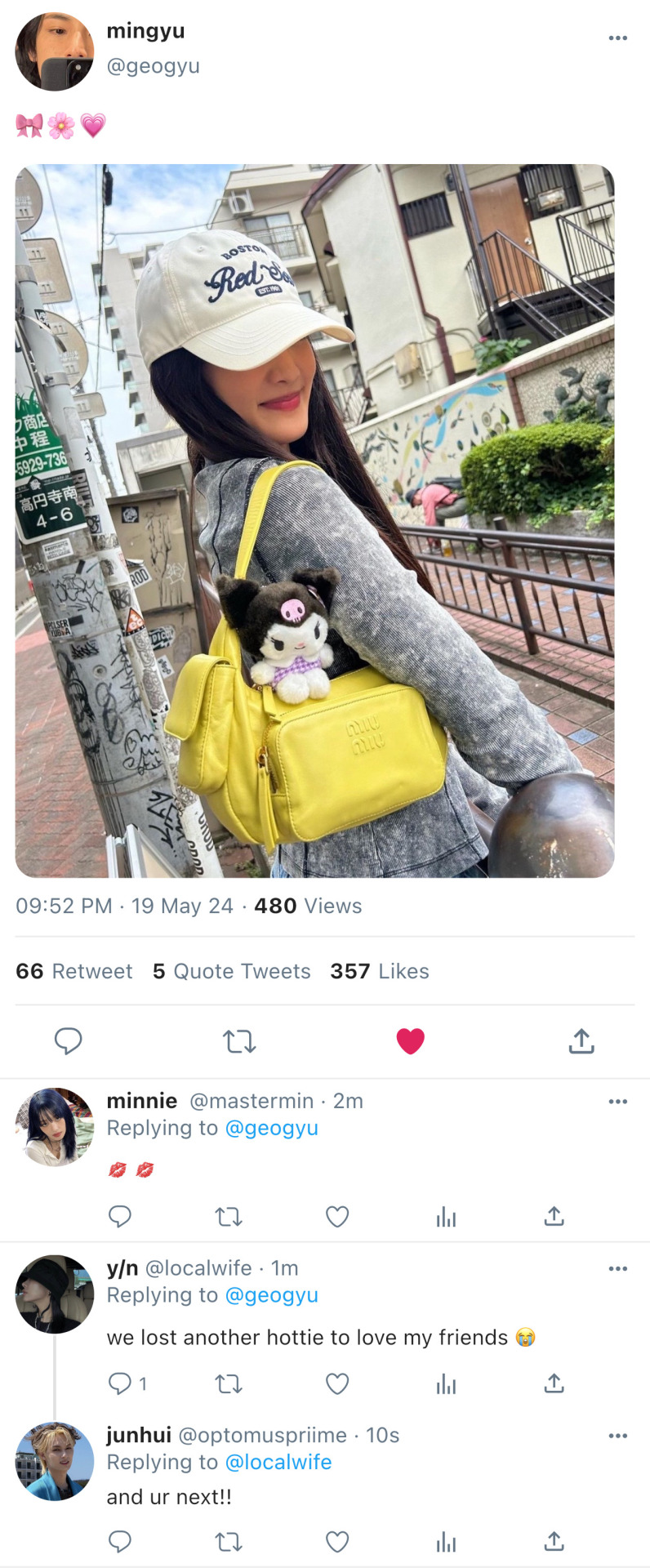

note: just one more main chapter before we end it :') then we will jump right into pancakes for dinner (next week hopefully!) love u guys sm thank u for always being so supportive xoxoxo.

taglist:@sun-daddy-yoriichi@hipsdofangirl@kissesfrmwonwoo@minhui896@wonwooz1@porridgesblog@jasssy051@soonyoungblr@saucegirlreads@musingsofananxiouspotato@young-adult-summer@punkhazardlaw@bibs-world@the-swageyama-tobiyolo@wonuulvr@woozixo@k-drama-adict@90s-belladonna@blaycke@dnylwoo@to-mi-yo, @nonononranghaee @bee-the-loser @mxnhoeuwu
#❃ - duffytalks#seventeen fluff#seventeen scenarios#seventeen headcanons#seventeen x reader#svt reactions#seventeen imagines#svt texts#svt fic#seventeen au#seventeen fic#seventeen smau#seventeen angst#seventeen sns#seventeen x oc#seventeen x you#seventeen x y/n#svt text au#svt scenarios#svt x reader#svt imagines#svt smut#svt fluff#svt fanfic#svt smau#svt drabbles#svt fake texts#svt x y/n#svt x you#svt x oc
58 notes
·
View notes
Text
Large Language Models and industrial manufacturing, a bibliography
References
Autodesk. (n.d.). Autodesk simulation. Retrieved July 14, 2023, from https://www.autodesk.com/solutions/simulation/overview
Chen, M., Tworek, J., Jun, H., Yuan, Q., de Oliveira Pinto, H. P., Kaplan, J., Edwards, H., Burda, Y., Joseph, N., Brockman, G., Ray, A., Puri, R., Krueger, G., Petrov, M., Khlaaf, H., Sastry, G., Mishkin, P., Chan, B., Gray, S., . . . Zaremba, W. (2021). Evaluating large language models trained on code. ArXiv.https://doi.org/10.48550/arXiv.2107.03374
Christiano, P. F., Leike, J., Brown, T., Martic, M., Legg, S., & Amodei, D. (2017). Deep reinforcement learning from human preferences. In I. Guyon, U. Von Luxburg, S. Bengio, H. Wallach, R. Fergus, S. Vishwanathan, & R. Garnett (Eds.), Advances in neural information processing systems (Vol. 30, pp. 4299–4307). Curran Associates. https://papers.nips.cc/paper_files/paper/2017/hash/d5e2c0adad503c91f91df240d0cd4e49-Abstract.html
Dassault Systèmes. (n.d.). Dassault Systèmes simulation. Retrieved July 14, 2023, from https://www.3ds.com/products-services/simulia/overview/
Dhariwal, P., Jun, H., Payne, C., Kim, J. W., Radford, A., & Sutskever, I. (2020). Jukebox: A generative model for music. ArXiv. https://doi.org/10.48550/arXiv.2005.00341
Du, T., Inala, J. P., Pu, Y., Spielberg, A., Schulz, A., Rus, D., Solar-Lezama, A., & Matusik, W. (2018). InverseCSG: Automatic conversion of 3D models to CSG trees. ACM Transactions on Graphics (TOG), 37(6), Article 213. https://doi.org/10.1145/3272127.3275006
Du, T., Wu, K., Ma, P., Wah, S., Spielberg, A., Rus, D., & Matusik, W. (2021). DiffPD: Differentiable projective dynamics. ACM Transactions on Graphics (TOG), 41(2), Article 13. https://doi.org/10.1145/3490168
Du, Y., Li, S., Torralba, A., Tenenbaum, J. B., & Mordatch, I. (2023). Improving factuality and reasoning in language models through multiagent debate. ArXiv. https://doi.org/10.48550/arXiv.2305.14325
Erez, T., Tassa, Y., & Todorov, E. (2015). Simulation tools for model-based robotics: Comparison of Bullet, Havok, MuJoCo, ODE and PhysX. In Amato, N. (Ed.), Proceedings of the 2015 IEEE International Conference on Robotics and Automation (pp. 4397–4404). IEEE. https://doi.org/10.1109/ICRA.2015.7139807
Erps, T., Foshey, M., Luković, M. K., Shou, W., Goetzke, H. H., Dietsch, H., Stoll, K., von Vacano, B., & Matusik, W. (2021). Accelerated discovery of 3D printing materials using data-driven multiobjective optimization. Science Advances, 7(42), Article eabf7435. https://doi.org/10.1126/sciadv.abf7435
Featurescript introduction. (n.d.). Retrieved July 11, 2023, from https://cad.onshape.com/FsDoc/
Ferruz, N., Schmidt, S., & Höcker, B. (2022). ProtGPT2 is a deep unsupervised language model for protein design. Nature Communications, 13(1), Article 4348. https://doi.org/10.1038/s41467-022-32007-7
Guo, M., Thost, V., Li, B., Das, P., Chen, J., & Matusik, W. (2022). Data-efficient graph grammar learning for molecular generation. ArXiv. https://doi.org/10.48550/arXiv.2203.08031
Jiang, B., Chen, X., Liu, W., Yu, J., Yu, G., & Chen, T. (2023). MotionGPT: Human motion as a foreign language. ArXiv. https://doi.org/10.48550/arXiv.2306.14795
JSCAD user guide. (n.d.). Retrieved July 14, 2023, from https://openjscad.xyz/dokuwiki/doku.php
Kashefi, A., & Mukerji, T. (2023). ChatGPT for programming numerical methods. Journal of Machine Learning for Modeling and Computing, 4(2), 1–74. https://doi.org/10.1615/JMachLearnModelComput.2023048492
Koo, B., Hergel, J., Lefebvre, S., & Mitra, N. J. (2017). Towards zero-waste furniture design. IEEE Transactions on Visualization and Computer Graphics, 23(12), 2627–2640. https://doi.org/10.1109/TVCG.2016.2633519
Li, J., Rawn, E., Ritchie, J., Tran O’Leary, J., & Follmer, S. (2023). Beyond the artifact: Power as a lens for creativity support tools. In Follmer, S., Han, J., Steimle, J., & Riche, N. H. (Eds.), Proceedings of the 36th Annual ACM Symposium on User Interface Software and Technology (Article 47). Association for Computing Machinery. https://doi.org/10.1145/3586183.3606831
Liu, R., Wu, R., Van Hoorick, B., Tokmakov, P., Zakharov, S., & Vondrick, C. (2023). Zero-1-to-3: Zero-shot one image to 3D object. ArXiv. https://doi.org/10.48550/arXiv.2303.11328
Ma, P., Du, T., Zhang, J. Z., Wu, K., Spielberg, A., Katzschmann, R. K., & Matusik, W. (2021). DiffAqua: A differentiable computational design pipeline for soft underwater swimmers with shape interpolation. ACM Transactions on Graphics (TOG), 40(4), Article 132. https://doi.org/10.1145/3450626.3459832
Makatura, L., Wang, B., Chen, Y.-L., Deng, B., Wojtan, C., Bickel, B., & Matusik, W. (2023). Procedural metamaterials: A unified procedural graph for metamaterial design. ACM Transactions on Graphics, 42(5), Article 168. https://doi.org/10.1145/3605389
Mathur, A., & Zufferey, D. (2021). Constraint synthesis for parametric CAD. In M. Okabe, S. Lee, B. Wuensche, & S. Zollmann (Eds.), Pacific Graphics 2021: The 29th Pacific Conference on Computer Graphics and Applications: Short Papers, Posters, and Work-in-Progress Papers (pp. 75–80). The Eurographics Association. https://doi.org/10.2312/pg.20211396
Mirchandani, S., Xia, F., Florence, P., Ichter, B., Driess, D., Arenas, M. G., Rao, K., Sadigh, D., & Zeng, A. (2023). Large language models as general pattern machines. ArXiv. https://doi.org/10.48550/arXiv.2307.04721
Müller, P., Wonka, P., Haegler, S., Ulmer, A., & Van Gool, L. (2006). Procedural modeling of buildings. In ACM SIGGRAPH 2006 papers (pp. 614–623). Association for Computing Machinery. https://doi.org/10.1145/1179352.1141931
Ni, B., & Buehler, M. J. (2024). MechAgents: Large language model multi-agent collaborations can solve mechanics problems, generate new data, and integrate knowledge. Extreme Mechanics Letters, 67, Article 102131. https://doi.org/10.1016/j.eml.2024.102131
O’Brien, J. F., Shen, C., & Gatchalian, C. M. (2002). Synthesizing sounds from rigid-body simulations. In Proceedings of the 2002 ACM SIGGRAPH/Eurographics Symposium on Computer Animation (pp. 175–181). Association for Computing Machinery. https://doi.org/10.1145/545261.545290
OpenAI. (2023). GPT-4 technical report. ArXiv. https://doi.org/10.48550/arXiv.2303.08774
Ouyang, L., Wu, J., Jiang, X., Almeida, D., Wainwright, C., Mishkin, P., Zhang, C., Agarwal, S., Slama, K., Ray, A., Schulman, J., Hilton, J., Kelton, F., Miller, L., Simens, M., Askell, A., Welinder, P., Christiano, P. F., Leike, J., & Lowe, R. (2022). Training language models to follow instructions with human feedback. In S. Koyejo, S. Mohamed, A. Agarwal, D. Belgrave, K. Cho, & A. Oh (Eds.), Advances in Neural Information Processing Systems (Vol. 35, pp. 27730–27744). Curran Associates. https://proceedings.neurips.cc/paper_files/paper/2022/hash/b1efde53be364a73914f58805a001731-Abstract-Conference.html
Özkar, M., & Stiny, G. (2009). Shape grammars. In ACM SIGGRAPH 2009 courses (Article 22). Association for Computing Machinery. https://doi.org/10.1145/1667239.1667261
Penedo, G., Malartic, Q., Hesslow, D., Cojocaru, R., Cappelli, A., Alobeidli, H., Pannier, B., Almazrouei, E., & Launay, J. (2023). The RefinedWeb dataset for Falcon LLM: Outperforming curated corpora with web data, and web data only. ArXiv. https://doi.org/10.48550/arXiv.2306.01116
Prusinkiewicz, P., & Lindenmayer, A. (1990). The algorithmic beauty of plants. Springer Science & Business Media.
Radford, A., Wu, J., Child, R., Luan, D., Amodei, D., & Sutskever, I. (2019, February 14). Language models are unsupervised multitask learners. OpenAI. https://openai.com/index/better-language-models/
Ramesh, A., Pavlov, M., Goh, G., Gray, S., Voss, C., Radford, A., Chen, M., & Sutskever, I. (2021). Zero-shot text-to-image generation. Proceedings of Machine Learning Research, 139, 8821–8831. https://proceedings.mlr.press/v139/ramesh21a.html
Repetier. (n.d.). Repetier software. Retrieved July 20, 2023, from https://www.repetier.com/
Richards, T. B. (n.d.). AutoGPT. Retrieved February 11, 2024, from https://github.com/Significant-Gravitas/AutoGPT
Rozenberg, G., & Salomaa, A. (1980). The mathematical theory of L systems. Academic Press.
Slic3r. (n.d.). Slic3r - Open source 3D printing toolbox. Retrieved July 20, 2023, from https://slic3r.org/
Stiny, G. (1980). Introduction to shape and shape grammars. Environment and Planning B: Planning and Design, 7(3), 343–351. https://doi.org/10.1068/b070343
Sullivan, D. M. (2013). Electromagnetic simulation using the FDTD method. John Wiley & Sons. https://doi.org/10.1002/9781118646700
Todorov, E., Erez, T., & Tassa, Y. (2012). MuJoCo: A physics engine for model-based control. In 2012 IEEE/RSJ International Conference on Intelligent Robots and Systems (pp. 5026–5033). IEEE. https://doi.org/10.1109/IROS.2012.6386109
Turing, A. M. (1936). On computable numbers, with an application to the Entscheidungsproblem. Proceedings of the London Mathematical Society, s2-42(1), 230–265. https://doi.org/10.1112/plms/s2-42.1.230
Willis, K. D., Pu, Y., Luo, J., Chu, H., Du, T., Lambourne, J. G., Solar-Lezama, A., & Matusik, W. (2021). Fusion 360 gallery: A dataset and environment for programmatic CAD construction from human design sequences. ACM Transactions on Graphics (TOG), 40(4), Article 54. https://doi.org/10.1145/3450626.3459818
Xu, J., Chen, T., Zlokapa, L., Foshey, M., Matusik, W., Sueda, S., & Agrawal, P. (2021). An end-to-end differentiable framework for contact-aware robot design. ArXiv. https://doi.org/10.48550/arXiv.2107.07501
Yu, L., Shi, B., Pasunuru, R., Muller, B., Golovneva, O., Wang, T., Babu, A., Tang, B., Karrer, B., Sheynin, S., Ross, C., Polyak, A., Howes, R., Sharma, V., Xu, P., Tamoyan, H., Ashual, O., Singer, U., . . . Aghajanyan, A. (2023). Scaling autoregressive multi-modal models: Pretraining and instruction tuning. ArXiv.https://doi.org/10.48550/arXiv.2309.02591
Zhang, Y., Yang, M., Baghdadi, R., Kamil, S., Shun, J., & Amarasinghe, S. (2018). GraphIt: A high-performance graph DSL. Proceedings of the ACM on Programming Languages, 2(OOPSLA), Article 121. https://doi.org/10.1145/3276491
Zhao, A., Xu, J., Konaković-Luković, M., Hughes, J., Spielberg, A., Rus, D., & Matusik, W. (2020). RoboGrammar: Graph grammar for terrain-optimized robot design. ACM Transactions on Graphics (TOG), 39(6), Article 188. https://doi.org/10.1145/3414685.3417831
Zilberstein, S. (1996). Using anytime algorithms in intelligent systems. AI Magazine, 17(3), 73–83. https://doi.org/10.1609/aimag.v17i3.1232
0 notes
Text
Maybe a lot of stuff called AI can be called just another quack pseudoscience snake oil.
Pseudoscience pushing unproven medical remedies and health treatments with no basis also usually has some "maybe in the future" assertion.
How to make a splash in AI economics: fake your data Pivot to AI May 17, 2025 What do we do about attacks on science like this? Science assumes good faith. The usual issue is sloppy work not straight up data fraud, but basic checking can't wait for the bubble. The big money in AI wants stuff it can call science to back up its claims of AI magic, and it doesn't want to wait around for the peer review process. Peer review can let through a lot of garbage but at least someone outside your lab has checked the amazing claimed results. The real trouble is that peer review journals aren't where the news happens these days. The news is in preprints on archive promoted by a tweet. AI companies routinely just put a post up on the archive or even just on their own site and everyone calls that the paper and it never goes to a journal. (emphasis added)
The news is in preprints on archive promoted by a tweet. This is something I've been harping on for years in terms of pandemic profiteering "science" hotshots on social media preying upon unwitting ordinary people trying to navigate a pandemic where the authorities have failed or have actively taken the side of the offending virus. People "self-experiment" because maybe it shows "promise" according to some preprint.
And that's what's been going on with AI, and it's perhaps more obvious to me because of how much of this sketch medical science I've seen ramped up in the pandemic, though not confined to infectious disease of course. The same people seem invested in all this stuff — crypto, AI, and alternative health products. And leveraging superstition and interest in mysticism, and leaning on fraudulent appeal to authority.
And additionally it’s used extensively for scams, just as an egregious bonus.
And after I had written this, I happened to listen to a podcast where someone did call “a lot of AI” products “snake oil” and hype, and it was someone in the business of using LLMs, which I think says it all doesn’t it.
The oracle of chatbot phenomenon is not benign. Don't Wait For Everybody - Episode 022 Chloe Humbert May 07, 2025
The problem with passing around science “information” without pause for scrutiny. It’s best to pause and reconsider resharing virus protocol sheets, pandemic zines, or a scientific study reference management link dump. Chloe Humbert Mar 27, 2025
Ignore nose hype and don't waste money. More pandemic profiteering that might violate regulations, and definitely isn’t ready for prime time. Chloe Humbert Dec 03, 2024
I stay FAR away from any avoidable UV lights. If it’s UV, it’s likely capable of harming human cells - there’s no long-term evidence otherwise. And exposing people to risks repeatedly while insisting IT'S MILD sounds awfully familiar. Chloe Humbert Aug 07, 2024
All the science that's fit to print… and some is actually unfit but gets published anyway. Beware those who claim that "censorship" is holding back "innovation" because the truth is science is a work in progress building consensus and building on a body of evidence with what's come before. Chloe Humbert Apr 08, 2025
A Long Hauler Redditor. A review of a long hauler’s self-reported story posted across 9+ months of reddit posts. Chloe Humbert · Apr 30, 2024
Vaughn, what team is he actually on? A second opinion on the politics of the pandemic healthcare landscape. Chloe Humbert · May 8, 2024
0 notes
Text
References
Bernhold, Q.S. (2019) ‘Parasocial relationships with disliked television characters, depressive symptoms, and loneliness among older adults’, Journal of Applied Communication Research, 47(5), pp. 548–570. doi:10.1080/00909882.2019.1679384.
Cemiloglu, D. et al. (2022) ‘Combatting digital addiction: Current approaches and future directions’, Technology in Society, 68, p. 101832. doi:10.1016/j.techsoc.2021.101832.
Chung, S. and Lee, H.K. (2022) ‘Public health approach to problems related to excessive and addictive use of the internet and Digital Media’, Current Addiction Reports, 10(1), pp. 69–76. doi:10.1007/s40429-022-00458-z.
Keles, B., McCrae, N. and Grealish, A. (2019) ‘A systematic review: The influence of social media on depression, anxiety and psychological distress in adolescents’, International Journal of Adolescence and Youth, 25(1), pp. 79–93. doi:10.1080/02673843.2019.1590851.
The Harris Poll. 2024. “Gen Z’s Complex Relationship with Social Media and Smart Phones.” The Harris Poll.
The Nation Thailand. 2024. “Social Media Addiction Puts Gen Z at Risk of Mental Health Disorders.” The Nation Thailand.
0 notes
Text
The latest Somerville Times (Edition 022) discusses the 2025 Federal Election, community empowerment initiatives, a controversial council rate hike, local sports updates, and concerns over council decisions favouring affluent areas. Support independent journalism!
#STPL News#Somerville Times#Mornington Peninsula News#Flinders Election#community news#Mornington Peninsula Council#Local Sports News#Flinders election 2025#Hastings Club#Western Port news#Tyabb Football Netball Club#Western Port neglect#Hastings Club closure#Community Empowerment#Tyabb FNC
0 notes